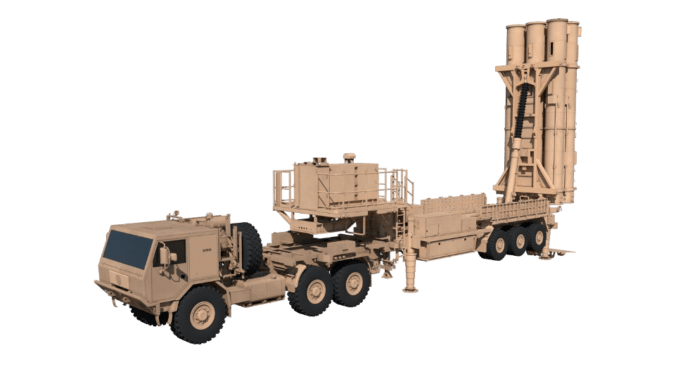
- Hanwha takes the lead of developing South Korea’s state-of-the-art air defense systems against evolving ballistic missile threats.
- Hanwha has proven and demonstrated reliable air defense capabilities over back-to-back deals with Middle Eastern countries, including UAE and Saudi Arabia.
- Looking beyond M-SAM, Hanwha is looking to deploy the Long-Range Surface-to-Air Missile (L-SAM), the Korean version of U.S. Terminal High-Altitude Area Defense, offering capabilities to meet updated air defense systems in the Middle East
- Hanwha is determined to be a ‘pathfinder for the defense capability and industry with integrated defense solutions’ under strategic partnerships
Hanwha Aerospace is emerging as a key partner in meeting the growing international demand for sophisticated air defense solutions amid the rapidly evolving aerial threats. Middle Eastern countries, in particular, are keen to bolstering their air defense networks to respond to evolving security challenges and the proliferation of advanced aerial threats.
Hanwha Aerospace has already secured its credibility in the region through a successful deal signed in 2022 with the United Arab Emirates (UAE) over the Medium-Range Surface-to-Air Missile (M-SAM) system, also dubbed as Cheongung (Sky Arrow).

M-SAM II
The successful deployment of M-SAM, which was co-developed by the state-funded Agency for Defense Development (ADD), has exceeded operational expectations, establishing Hanwha’s reputation as a reliable partner in the defense sector.
For the UAE contract valued around USD 3.5 billion, Hanwha Aerospace provided a variety of key components, ranging from missile launch pad, propulsion system to transport vehicles. Hanwha Systems was responsible for providing its sophisticated Multi-Function Radar (MFR) to detect, track and identify incoming missiles effectively.
The M-SAM was developed to replace South Korea’s MIM-23 HAWK systems as part of the Korean Air Missile Defense System (KAMD) in response to North Korea’s lingering ballistic missile threats. An M-SAM battery consists of a mobile MFR, a command-post vehicle, four launchers each carrying eight vertically launched missiles in canisters.
The UAE acquired M-SAM Block II variant with improved maneuverability and a ‘hit-to-kill’ capability against ballistic missiles. The range of M-SAM II is 20 to 50 kilometers, with the interception altitude of 15 to 40 kilometers, depending on the type of target. The missile’s maximum speed is Mach 5 (1.7km/s).
Following the UAE, additional orders of the M-SAM II have been made by Saudi Arabia and Iraq, respectively, in 2023 and 2024, proving the Korean air defense system’s outstanding capability to meet the security demands in the Middle East market.
L-SAM, Korean version of THAAD
Building on the successful track record of the M-SAM development, Hanwha is looking to deploy a Long-Range Surface-to-Air Missile (L-SAM), the Korean version of U.S. Terminal High-Altitude Area Defense.

L-SAM
An improved version of M-SAM, the L-SAM provides cutting-edge technologies in upper-tier missile defense capability to intercept ballistic missile threats at altitudes of 50-60 kilometers.
The L-SAM features a ‘hit to kill’ technology, a direct-impact interception method ensuring maximum effectiveness against incoming threats, which makes it one of the most advanced missile defense systems available today. The system can seamlessly operate with existing lowertier defense systems, creating a comprehensive, multi-layered defense shield. This interoperability, combined with its advanced Command and Control (C2) system integration, offers enhanced defensive capabilities that can be tailored to specific operational requirements.
The L-SAM Multi-Function Radar (MFR), developed by Hanwha Systems, provides exceptional detection and tracking capabilities against various aerial threats, including high-altitude ballistic missiles, aircraft, and cruise missiles. The engagement process involves multiple integrated steps: from initial threat detection and tracking, through missile launch and guidance, to final target interception. This complex sequence of events is orchestrated through a cutting-edge command and control center that ensures optimal engagement strategies for each threat scenario.

L-SAM launcher
The precision guidance technology required for L-SAM’s interceptor is more challenging than the hit-to-kill methodology. The precision guidance system incorporates advanced propulsion and control technologies, enabling precise interception at high altitudes where conventional systems struggle to operate effectively. These sophisticated features ensure accurate target engagement in the most challenging environments, maintaining L-SAM’s exceptional performance even in extreme conditions.
Following successful development and testing phases in late 2024, the L-SAM is set to enter mass production for the deployment by 2027, with Hanwha Aerospace playing a central role in bringing this sophisticated system to the international defense market.
L-SAM II in the offing
Demonstrating its commitment to continuous innovation, Hanwha Aerospace is already developing the next iteration, L-SAM II, under a state arms development project with the ADD. Scheduled for completion in 2028, the L-SAM II will expand defensive coverage by three to four times compared to existing systems, offering an additional layer of protection at even higher altitudes.
“Our approach goes beyond providing defense systems,” says Kyehwan Oh, Managing Director of Hanwha Aerospace. “Hanwha Aerospace will be a pathfinder for the defense capability and industry with integrated defense solutions, offering comprehensive partnerships for delivering rapid, cost-effective products while contributing to industrial growth and technological advancement in customer nations we serve.”
“Our proven track records of international collaboration demonstrate our ability to meet customer requirements efficiently and economically,” Oh said, adding his company is ready to offer comprehensive training, maintenance support, and potential technology transfer opportunities as well, positioning Hanwha as a strategic partner for nations looking to enhance their defense capabilities while developing their domestic industrial base.






Be the first to comment